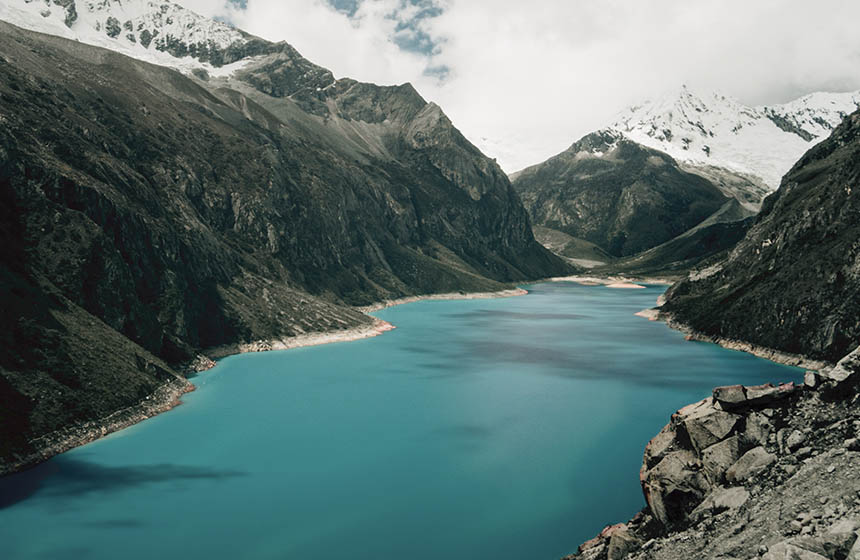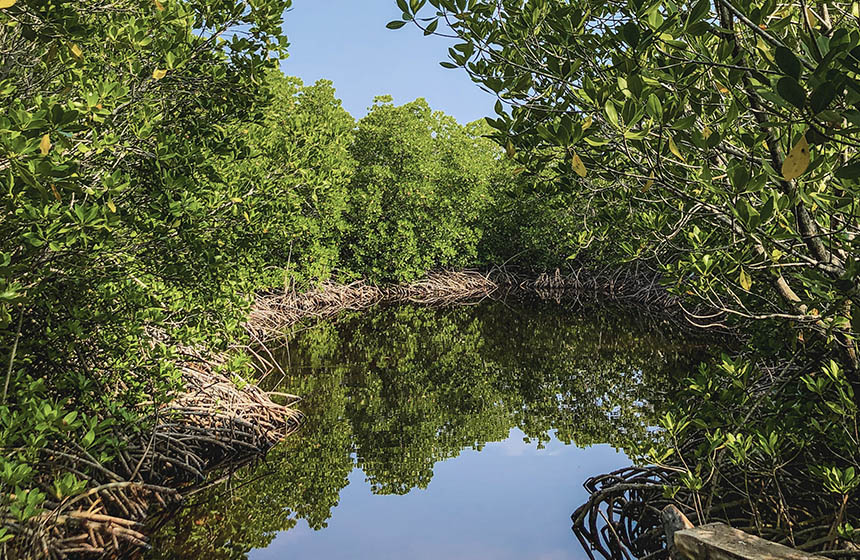Glacial mountain watershed management
Ecosystem restoration and protection combined with communal grazing and water use plans aim to reduce vulnerability to the effects of glacial retreat caused by climate change.
Nature-based Intervention:
Proyecto Glaciares in Peru promotes a community-led initiative advised by scientists and public and private sector actors to develop a sustainable watershed management plan in relation to tropical glacier water systems. The initiative manages 200 new lakes, protects and restores wetland by replanting native species, fencing tributaries to restore vegetation, and has established a communal grazing plan to prevent overgrazing. Farmers in the area have also been encouraged to make more sustainable use of water resources.
Overview of context and outcomes:
The highland glacial mountain ecosystems in Peru are complex constellations of glacier-fed lagoons, lakes, rivers, and grassland. As the steward of the majority of the world’s tropical glaciers, Peru will be disproportionately affected by the climate change hazards facing glacier stability. Due to large-scale glacial retreat, lagoons become unstable and increase the risk of landslides and flash floods. The disruption of highland glacial ecosystems further risks the well-being of flora, fauna, humans, and entire ecosystems dependent on them. This project also combined the implementation of gray and green infrastructure, with hydropower dams being integrated into the project to generate clean energy for the local community.
Case effectiveness on
Climate change
Climate mitigation benefits for this project have not been quantified or reported. However, empirical literature suggests that restoration of glacial ecosystems through improved water and resource management can reduce land degradation and improve a landscape’s capacity for carbon storage (5).
It is estimated that the improved management and restoration of glacial ecosystems will likely reduce climate-related risks of landslides and flash floods for more than 70,000 people (2). Increased scientific modeling and expertise has also allowed for long-term planning to be implemented alongside natural interventions to reduce overall risk (3). Furthermore, efforts to increase awareness of climate-related risks as well as the implementation of early disaster warning systems will likely further support communities in adapting to climate-related hazards.
Ecosystem health
Ecological effect: PositiveAccording to Proyecto Glaciares, 143 hectares of wetland and 11 hectares of springs have been restored and protected and 200 new lakes have been formed and are currently sustainably managed allowing for a localized increase in habitat quality (5). The organisation reports that these interventions have increased available water sources and improved habitats for local wildlife (1,5).
Socioeconomic outcomes
Community leadership and management of the project is predicted by Proyecto Glaciares to strengthen capacity to deal with climate-related hazards (5). Four women-owned and operated companies have been established to sell coffee, granadilla, honey, and other products within the watershed to diversify livelihoods (1). The formation of the glacial alpine lakes has also opened up tourism opportunities in the region allowing for their sustainable management to contribute to income generation (3).
Governance
Governance of this project was administered at the local, regional, and national level with each playing a key role in risk reductions strategies. Knowledge exchange between the scientific community and public sector supported the capacity building of the government at all three levels (1). This work led to the creation of the National Institute of Glaciers and Mountain Ecosystems which allowed for the integration of adaptation management, disaster risk reduction, and water management approaches under a single authority.
Finance
The main financier for this project was the Swiss Agency for Development and Cooperation (SDC) with the execution of this project co-facilitated by the University of Zurich. The initial investment ended in 2019, with the objective to be initial capacity building of local peoples rather than long term external support (4).
Monitoring and evaluation
Through collaboration with the University of Zurich capacity building was undertaken to give the public sector greater expertise in monitoring the Glaciers (2). The scientists helped train local officials in glaciology and worked to integrate science and indigenous knowledge to improve monitoring capabilities and support disaster risk reduction.
Trade-offs and limitations
It can be difficult to predict or model specific outcomes in their relations to disaster risk management. While information sharing and regional capacity building can better prepare local peoples, uncertainty remains in the understanding of how the glacial melt pattern will affect the surrounding landscape (3).
References
- Hou-Jones, X, Roe, D and Holland, E., 2021. Nature-based Solutions in Action: Lessons from the Frontline. London. Bond.
- Demerritt, P., 2020. Taking Care of our Mountains. CARE USA and CARE Peru, joining the celebration of the International Mountain Day
- Colonia, D., Torres, J., Haeberli, W., Schauwecker, S., Braendle, E., Giraldez, C. and Cochachin, A., 2017. Compiling an inventory of glacier-bed overdeepenings and potential new lakes in de-glaciating areas of the Peruvian Andes: approach, first results, and perspectives for adaptation to climate change. Water, 9(5), p.336.
- CARE. 2021. Glaciares+ – Adapting to Climate Change in Peru – CARE.
- CARE Perú, 2022. Proyecto Glaciares+ : CARE Perú. Proyecto Glaciares + : CARE Perú.

Intervention type
- Food production
- Management
- Protection
- Restoration
Ecosystem type
- Montane/Alpine
- Terrestrial production
Climate change impacts addressed
- Freshwater flooding
- Mudslides / Landslides
- Reduced water availability
Instigators
- Community/self driven
- State/district/local government agency
- International development organization
- Local NGO or CBO (eg. indigenous)
- National government/agency
- Research institutions
Societal challenges
- Biodiversity conservation
- Climate change adaptation
- Disaster risk reduction
- Economic and Social development
- Rights/empowerment/equality
- Food security
- Water security
Outcomes
- Food security: Unclear
- Water security: Positive
- Health: Not reported
- Local economics: Positive
- Livelihoods/goods/basic needs: Not reported
- Energy security: Not reported
- Disaster risk reduction: Positive
- Rights/empowerment/equality: Unclear
- Conflict and security: Unclear
- No. developmental outcomes reported: 5
Resources
Read resource 1Read resource 2
Read resource 3
Literature info
- Grey literature



